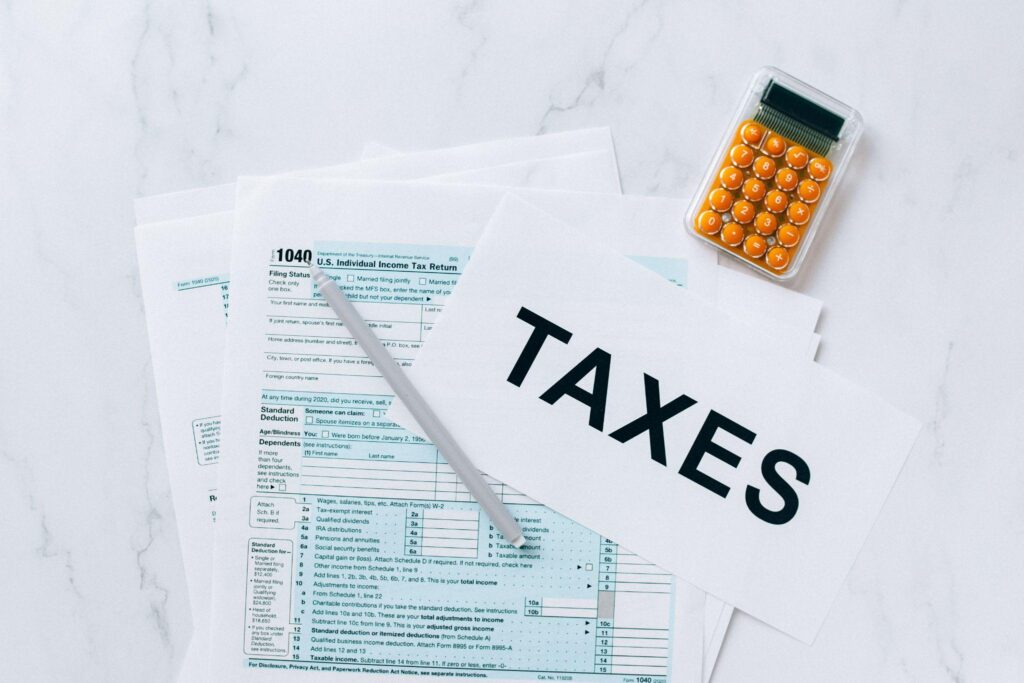Tax Forgiveness: What You Need to Know
In the world of taxes, tax debt forgiveness can provide immense relief to those drowning in tax debt and those who cannot pay taxes. For individuals and businesses struggling under significant tax liability, understanding this concept is more than a financial issue—it’s a lifeline.
This article aims to help you understand tax forgiveness, how it works, and, most importantly, who can significantly benefit from it. This resource is crucial for anyone seeking IRS tax relief and a path out of debt through programs like the IRS debt forgiveness program.
You may also like: Eligibility for IRS Innocent Spouse Relief: A Detailed Overview
What Is Tax Forgiveness?
Tax forgiveness is a provision that allows eligible taxpayers to reduce or eliminate their tax liability, offering an avenue for tax debt relief. It isn’t a universal remedy, and not all taxpayers with tax debt will qualify.
The IRS applies stringent criteria when granting forgiveness. Benefits include reducing tax burden, while drawbacks may include federal tax liens if conditions aren’t met.
How Do You Qualify?
To qualify under the IRS debt forgiveness program, you must meet specific eligibility requirements that demonstrate your inability to pay the full tax debt you owe without causing significant financial difficulties.
The IRS meticulously reviews your financial situation, taking various factors into account. Here are nine things you should know:
1. Income and Expenses
The IRS will scrutinize your total income and expenses. To qualify, your disposable income (money left after paying for essential living expenses) must be insufficient to pay off your tax debt.
2. Asset Equity
The IRS will assess the value of your assets, such as properties, vehicles, and savings. If you could pay your tax debt by selling these assets, you might not qualify for tax debt relief.
3. Compliance with Tax Requirements
You must be current with all tax return filings. The IRS will not consider an Offer in Compromise (OIC) if you haven’t filed all required tax returns.
You may also like: IRS Penalty Relief: Your Comprehensive Guide to Reduce Financial Burden
4. Legal Obligations
You can’t have an open bankruptcy proceeding. Tax forgiveness is generally not an option until your bankruptcy is finalized.
5. Offer in Compromise
Most people applying for a IRS debt forgiveness program will apply through the Offer in Compromise program. This is where you propose a lump sum cash payment or installment agreement to the IRS that is less than the total amount of taxes you owe. The IRS will accept this offer if they believe it is the most they can expect to collect within a reasonable period.
6. Extreme Conditions
In some cases, the IRS might grant forgiveness if you are facing exceptional circumstances, such as a serious illness or other extreme financial situations.
7. No Fraud or Tax Evasion History
You won’t qualify if you’ve been charged with tax evasion or found guilty of fraud.
8. Doubt as to Liability
If there’s a legitimate doubt that you owe part or all of the tax debt, you may qualify.
9. Doubt as to Collectibility
This is the most common basis for an OIC. It exists when the taxpayer’s assets and income are less than the full amount of the tax liability.
Engaging qualified tax professionals is often an excellent first step. They can assess your case, help you gather the necessary documents, and guide you through the application process. It is a serious matter; if the IRS senses any lack of honesty, your application will likely be rejected.
Remember, each case is unique. The IRS looks at the full picture, and the decision to grant tax debt relief is not taken lightly.
You may also like: Demystifying the Tax Lien Withdrawal Process: What You Need to Know
Applying for Tax Forgiveness
Navigating the process of applying for tax forgiveness can be complex and daunting. This section provides a detailed step-by-step guide on what to expect and how to prepare.
Step 1: Assess Your Eligibility
Before beginning the application process for forgiveness, it is vital to assess whether you meet the IRS’s strict eligibility criteria. It involves evaluating your income, taxable income, income tax return, assets, expenses, and financial difficulties. Consulting with tax professionals or an IRS tax relief program advisor can provide clear guidance on whether you are a viable candidate for forgiveness.
Step 2: Gather Required Documentation
To substantiate your claim, you’ll need comprehensive records. These typically include income statements, details of assets, a list of monthly living expenses, federal tax liens information, and recent tax returns. Having complete and accurate records is essential for a successful application.
Step 3: Complete the Application Forms
At this stage, the main form you will need to complete is the Offer in Compromise (OIC) application, Form 656. This form will require detailed financial information, and honesty is paramount. Another key form is the Collection Information Statement (Form 433-A or Form 433-F).
Step 4: Submit Your Application and Pay Initial Fee
Send your completed application to the IRS, along with the application fee and an initial payment. The IRS debt forgiveness application typically requires a $205 fee, but some applicants, like those claiming extreme financial hardship, may be exempt from this payment.
Step 5: Wait for IRS Response
After submitting your application, patience is required. The IRS may take months to review your application. During this time, continue to meet your current tax obligations and stay in contact with the IRS tax forgiveness program representatives.
Step 6: Respond to IRS Requests and Negotiate if Necessary
The IRS may request additional information or clarification on certain points. Prompt, complete responses are crucial. If your initial offer is rejected, there is an opportunity to negotiate. Having a tax resolution services expert on your side can be beneficial during this phase.
Step 7: Comply with the Terms if Accepted
If the IRS accepts your offer, strict compliance with the terms is non-negotiable. This often involves making lump sum payments or installment agreements as agreed, filing your taxes on time in subsequent years, and meeting all other conditions of your agreement.
You may also like: Exploring Deductible Taxes: Your Key to Smarter Financial Planning
Common Misconceptions and Truths about Tax Forgiveness
Tax debt forgiveness is a life-changing option for eligible taxpayers, but misinformation can lead to unrealistic expectations or missed opportunities. This section clears up some common myths about forgiveness.
Misconception 1: Tax Forgiveness Is Available to Everyone
A prevalent misconception is that forgiveness is a universal option for all taxpayers. In reality, the IRS debt forgiveness program is designed for individuals experiencing significant hardship, making it impossible to pay their full tax debt.
The IRS has strict eligibility requirements that must be met, which may include income limits, asset evaluations, and a detailed review of your financial circumstances. Consulting a tax professional is advised to assess your eligibility comprehensively.
Misconception 2: Tax Debt Forgiveness Clears All Tax Debts Immediately
Many believe tax forgiveness is a magic wand that instantly wipes out all tax debts. This is far from the truth. IRS tax debt forgiveness is a process where the IRS agrees to accept less than the full amount a taxpayer owes.
The agreement’s specifics, such as a lump sum payment plan or an installment agreement, depend on the taxpayer’s financial situation. It requires patience, extensive documentation, and, in some cases, negotiations with the IRS.
Misconception 3: The Application Process Is Simple and Easy
Some assume that applying for tax forgiveness is straightforward. In fact, the process involves detailed paperwork, including proof of income, expenses, and assets.
The complexity of IRS debt forgiveness programs often makes hiring a qualified tax professional advantageous. Their expertise can guide applicants through the intricate process and help avoid common pitfalls.
Misconception 4: Being Approved Means You Don’t Have to Pay Anything
Some believe that tax forgiveness means you won’t have to pay anything to the IRS. In reality, most accepted offers require a significant payment towards the tax bill, either as a lump sum or through an installment agreement. Forgiveness reduces the amount owed but rarely eliminates it entirely.
Misconception 5: A Rejected Application Cannot Be Reconsidered
A common misconception is that a rejected application is the end of the road. In fact, taxpayers have the right to appeal a rejected application within 30 days. With the assistance of tax resolution services, a compelling case for reevaluation can be made, offering a second chance at tax relief.
You may also like: Tax Relief Programs: Your Essential Guide to Financial Reprieve
Final Thoughts
The IRS tax debt forgiveness program can be a lifeline for those burdened with overwhelming tax debt. It’s not a universal solution, but for those who claim extreme financial hardship, it provides a real pathway toward potentially reducing what they owe to the IRS.
Obtaining this is not quick or easy; it is thorough and demands detailed documentation. Accuracy and honesty are paramount, and professional guidance is often invaluable. Consulting with a qualified tax expert is advisable to maximize your chances of success.
Remember, even when granted tax forgiveness, you may still be required to pay a reduced amount. The terms of the agreement, whether a lump sum payment or an installment plan, vary significantly based on individual circumstances. However, for those in desperate situations, IRS debt forgiveness can provide significant relief, offering a fresh start toward financial stability.
Sponsored Advertising Content:
Advertorial or Sponsorship User published Content does not represent the views of the Company or any individual associated with the Company, and we do not control this Content. In no event shall you represent or suggest, directly or indirectly, the Company's endorsement of user published Content.
The company does not vouch for the accuracy or credibility of any user published Content on our Website and does not take any responsibility or assume any liability for any actions you may take as a result of reading user published Content on our Website.
Through your use of the Website and Services, you may be exposed to Content that you may find offensive, objectionable, harmful, inaccurate, or deceptive.
By using our Website, you assume all associated risks.This Website contains hyperlinks to other websites controlled by third parties. These links are provided solely as a convenience to you and do not imply endorsement by the Company of, or any affiliation with, or endorsement by, the owner of the linked website.
Company is not responsible for the contents or use of any linked website, or any consequence of making the link.
This content is provided by New Start Advantage LLC through a licensed media partnership with Inquirer.net. Inquirer.net does not endorse or verify partner content. All information is for educational purposes only and does not constitute financial advice. Offers and terms may change without notice.







